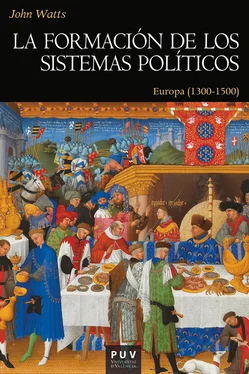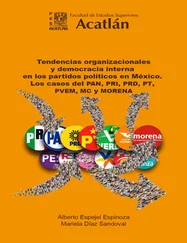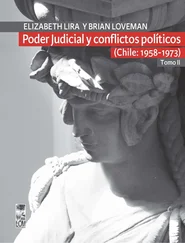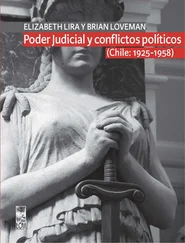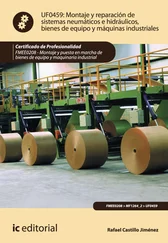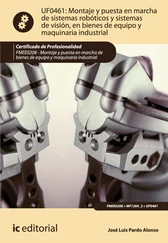2 B. Guenée: States and Rulers in Later Medieval Europe , traducción de J. Vale (Oxford, 1985), pp. 207-208.
3 G. Holmes, Europe: Hierarchy and Revolt, 1320-1450 (Londres, 1975), p. 12.
4 D. Hay, Europe in the Fourteenth and Fifteenth Centuries , 2.ª ed. (Harlow, 1989), pp. 25-26.
5 J. Heers, Parties and Political Life in the Medieval West , traducción de D. Nicholas (Ámsterdam, 1977), pp. 1-2.
6 Publicado en J. O. Halliwell (ed.), A Chronicle of the First Thirteen Years of King Edward the Fourth by John Warkworth D. D. , Camden Society, serie antigua, 10 (Londres, 1839), pp. 46-51.
7 Memorias de Don Enrique IV de Castilla , edición de F. Fita y A. Bonilla, Real Academia de Historia (Madrid, 1913), vol. II, pp. 328 y ss.
8 Publicado en Diplomatarium Danicum 2.raekke, 8.bind, 1318-1322 , edición de A. Afzelius et alii (Copenhague, 1953), n.º 176.
9 Les ordonnances des rois de France de troisième race , edición de E. de Lauri et alii , 22 vols. (París, 1723-1849), vol. I, pp. 562-563.
10 Ordonnances , vol. I, pp. 354, 562; English Historical Documents , vol. III, edición de H. Rothwell (Londres, 1969), pp. 485-486.
11 R. W. Southern, Western Society and the Church in the Middle Ages (Londres, 1970), cap. 2.II; D. Nicholas, The Evolution of the Medieval World, 312-1500 (Londres, 1992).
12 Citas en J. L. Watts (ed.), The End of the Middle Ages (Stroud, 1998) y D. Nicholas, The Transformation of Europe, 1300-1600 (Londres, 1999), p. I.
13 Holmes, Hierarchy and Revolt , p. 11: «Muy a grandes rasgos, este libro trata sobre la transición de la Europa “medieval” a la del “Renacimiento”».
14 W. K. Ferguson, Europe in Transition, 1300-1520 (Londres, 1962), p. vii.
15 Los títulos y subtítulos de dichos capítulos han sido tomados de D. Waley y P. Denley, Later Medieval Europe, 1250-1550 , 3.ª ed. (Londres, 2001) y J. Le Goff, The Birth of Europe , traducción de J. Lloyd (Oxford, 2005).
16 Las obras claves son las de R. Brenner, «Agrarian Class Structure and Economic Development in Pre-Industrial Europe», Past and Present , 70 (1976) (véase también The Brenner Debate , edición de T. H. Aston y C. H. E. Philpin (Cambridge, 1985)); R. Hilton, Bond Men Made Free (Londres, 1973); G. Bois, The Crisis of Feudalism (Cambridge, 1984); É. Perroy, «Les crises du XIV esiècle», Annales ESC , 4 (1949), 167-182; R. Boutruche, La crise d’une société (París, 1947); J. Heers, L’Occident aux XIV e et XV e siècles: aspects économiques et sociaux (París, 1963); M. Mollat y P. Wolff, The Popular Revolutions of the Late Middle Ages (Londres, 1973).
17 La frase es de Philippe Contamine, «The French Nobility and the War», en K. Fowler (ed.), The Hundred Years War (Londres, 1971), pp. 135-162 (en la p. 151).
18 Perroy, «Crises», p. 168.
19 S. R. Epstein, Freedom and Growth. The Rise of States and Markets in Europe, 1300-1750 (Londres, 2000), pp. 38 y 41-46; J. Goldsmith, «The Crisis of the Late Middle Ages, The Case of France», French History , 9 (1995), pp. 417-450.
20 Véanse, por ejemplo, P. Charbonnier, «La crise de la seigneurie à la fin du moyen âge, vue de l’autre France», en Seigneurs et seigneuries au moyen-âge , Actes du 117 eCongrès Nationale des Sociétés Savantes (París, 1995), pp. 99-110; T. Scott, Society and Economy in Germany, 1300-1600 (Basingstoke, 2002), pp. 153-166.
21 Epstein, Freedom and Growth , cap. 3; F. Franceschi, «The Economy: Work and Wealth», en J. M. Najemy (ed.), Italy in the Age of the Renaissance (Oxford, 2004), cap. 6, p. 125.
22 J. Hatcher y M. Bailey desarrollan una explicación en cierta manera similar en Modelling the Middle Ages. The History and Theory of England’s Economic Development (Oxford, 2001), p. 175.
23 Sobre el papel de la escasez de plata en la deflación de mediados de centuria, así como cierta atención sobre sus consecuencias políticas, véase P. Spufford, Money and its Use in Medieval Europe (Cambridge, 1988), cap. 15. Para la «economía renacentista», véase, por ejemplo: H. A. Miskimin, The Economy of Early Renaissance Europe, 1300-1460 (Cambridge, 1975).
24 S. K. Cohn, Lust for Liberty. The Politics of Social Revolt in Medieval Europe, 1200-1425 (Cambridge, Massachusetts, 2006), especialmente los caps. 9-10.
25 Hemos traducido sistemáticamente la palabra inglesa town con el término genérico «municipio» y no como «villa», ya que no siempre respondía a este significado particular del castellano. Esto, además, ha permitido reservar el término «ciudad» para el original inglés city , el de «villa» para vill y el de «municipalidad» para municipality [ N. del t. ].
26 P. Freedman, The Origins of Peasant Servitude in Medieval Catalonia (Cambridge, 1991); J. Vicens Vives, An Economic History of Spain , traducción de F. M. López-Morillas (Princeton, 1969), pp. 257 y 259-260.
27 J. Huizinga, The Waning of the Middle Ages , traducción de F. Hopman (Harmondsworth, 1955), el título del cap. 1.
28 P. Contamine, War in the Middle Ages , traducción de M. C. E. Jones (Oxford, 1984), p. 123.
29 R. W. Kaeuper, War, Justice and Public Order: England and France in the Later Middle Ages (Oxford, 1988), p. 390 y cap. 2.4.
30 Los que han destacado el papel de la guerra en el impulso del proyecto más positivo de la formación estatal serán tratados un poco más adelante.
31 W. Reinhard (ed.), Power Elites and State Building (Oxford, 1996), p. 9. Hay otras sugerentes estadísticas sobre el crecimiento de los ejércitos desde finales del siglo XV en P. Contamine (ed.), War and Competition Between States (Oxford, 2000), p. 131.
32 M. C. Prestwich, Edward I (Londres, 1988), p. 479; Contamine, War in the Middle Ages , p. 116; C. J. Rogers, «The Age of the Hundred Years War», en M. H. Keen, Medieval Warfare, A History (Oxford, 1999), p. 137 (y véase también la p. 273); Najemy, Italy in the Age of the Renaissance , p. 199; J. F. Verbruggen, The Art of Warfare in Western Europe during the Middle Ages , traducción de S. Willard y S. C. M. Southern (Ámsterdam y Oxford, 1977), p. 143.
33 Contamine, War in the Middle Ages , pp. 129, 152; K. Fowler, Medieval Mercenaries. I. The Great Companies (Oxford, 2001), pp. 6 y 331-332. M. Mallett, Mercenaries and their Masters. Warfare in Renaissance Italy (Londres, 1974), pp. 29-36, discute el tamaño de cuatro compañías, tres de ellas con 3.000, 3.500 y 6.000 miembros respectivamente, así como la de Fra Moriale, a la que se atribuyen 10.000 en 1353-1354. En tanto que es la estimación de un cronista, los números reales pudieron haber sido bastante menores. Los ejércitos reales franceses eran todavía aparentemente muy grandes en la década de 1340 –más de 40.000 hombres en armas en 1340, y 20.000-25.000 con Felipe VI en Crécy–: Holmes, Hierarchy and Revolt , pp. 25-26; J. Sumption, Trial by Battle: The Hundred Years War, I (Londres, 1990), p. 526.
34 M. G. A. Vale, War and Chivalry (Londres, 1981), pp. 156-157 y cap. 5.
35 H. Kaminsky, «The Noble Feud in the Later Middle Ages», Past and Present , 177 (2002), pp. 55-83.
36 R. Cazelles, «La réglementation royale de la guerre privée de Saint Louis à Charles V, et la précarité des ordonnances», Revue Historique de Droit Français et Étranger , serie 4.ª, 38 (1960), pp. 530-548.
Читать дальше
